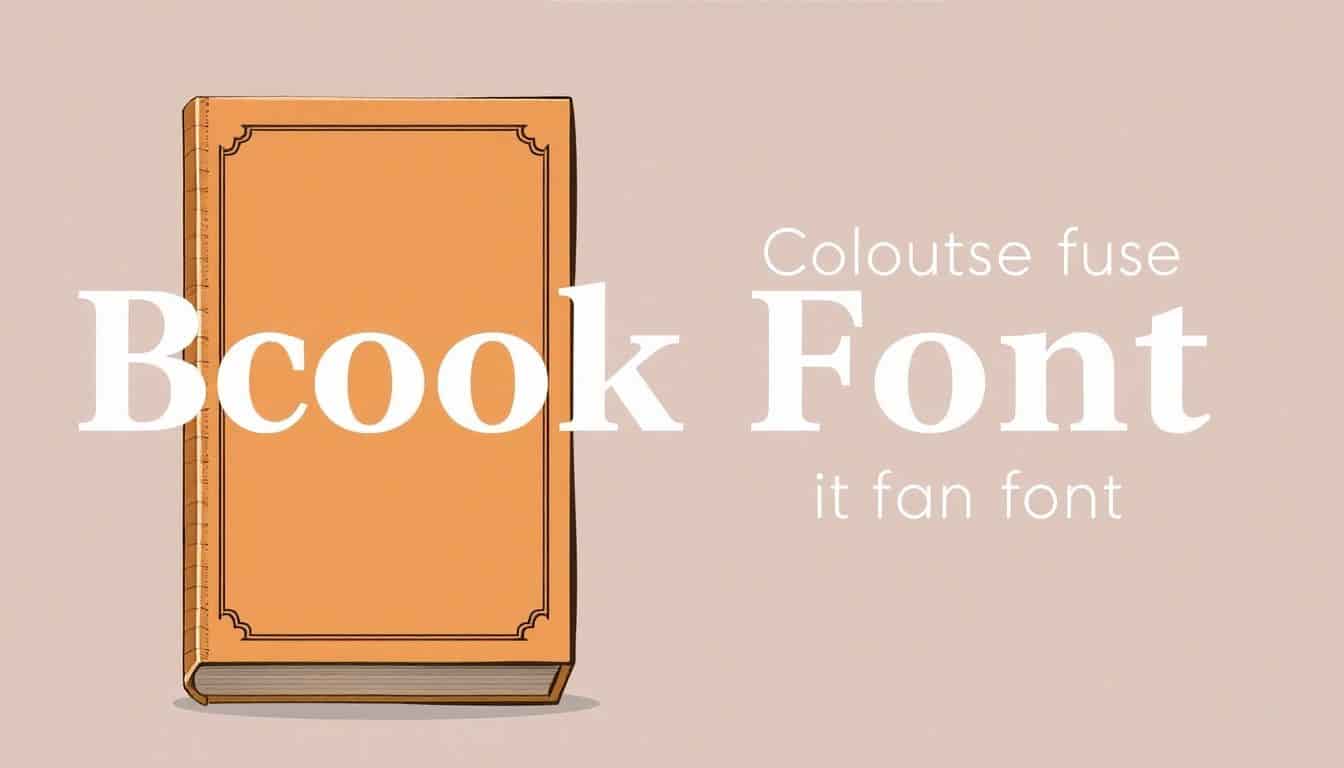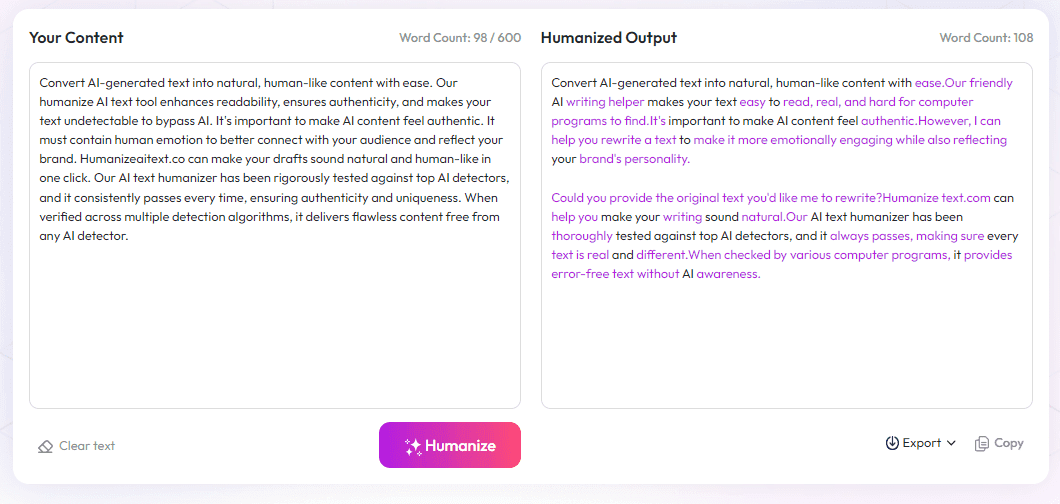Table of Contents
Finding the perfect font for your 2025 book cover can feel overwhelming, especially with so many options out there. You might worry about choosing something that suits your genre while still grabbing attention. But don't worry—you’re about to learn how to pick fonts that not only look great but also make your book stand out.
Keep reading, and I’ll show you simple tips on matching fonts to your book’s mood, using clever pairings, and staying on trend with bold, modern styles. By the end, you'll have a clear idea of what fonts work best for any genre or style.
In just a few minutes, you'll be ready to choose fonts that catch the eye, tell your story, and make your cover unforgettable.
Key Takeaways
Key Takeaways
- Choose fonts that reflect your genre, like sans-serifs for modern looks, handwritten scripts for romance, and serif fonts for non-fiction. Trending styles emphasize boldness and simplicity for year-round impact.
- Prioritize readability with large, clear fonts. Avoid overly decorative or tiny type, especially for thumbnail views or distance viewing.
- Pair fonts wisely—use a bold font for titles and a contrasting, simpler font for subtitles or author names. Keep font choices to two or three for a clean look.
- Bold, modern fonts like Bricolage Grotesque and Outfit dominate 2025 cover trends, creating eye-catching, minimal designs that stand out.
- Ensure you have the rights to use your fonts and select accessible options that work across devices. Licensing and open-source fonts help keep your design professional and compliant.

Identify the Best Fonts for 2025 Book Covers Based on Genre
When it comes to choosing fonts for your 2025 book covers, the right typeface can make all the difference in catching a reader’s eye and conveying the book’s genre and mood instantly. Trending fonts for 2025 emphasize versatility, readability, and boldness, with popular choices including geometric sans-serifs like Bricolage Grotesque and Outfit. These fonts stand out thanks to their clean lines and adaptability, working well across fiction, non-fiction, and literary genres.
For genres like romance and young adult, handwritten script fonts such as Bring Romantic and Love Letters remain favorites due to their elegance and warmth, helping to create a lighthearted or intimate feel. These fonts often include stylistic ligatures and alternate characters that give designers flexibility to craft a romantic or whimsical vibe.
Non-fiction titles, especially textbooks, biographies, or self-help books, often lean toward modern serif fonts like Thinkerbery. These fonts combine professionalism with simplicity, emphasizing clarity and authority—traits that help non-fiction covers appear credible and approachable at the same time.
Additionally, Art Deco-inspired fonts like Minerva and versatile sans-serifs such as Aoki are gaining ground—and for good reason. They provide a soft, rounded aesthetic that remains highly readable at small sizes, which is essential when designing eye-catching book covers.
Trend analysis shows that 2025 design prefers bold, statement fonts that make an immediate impact. Large, thick letters help set the emotional tone and grab attention in crowded bookstores or digital marketplaces. Minimalist designs that rely on bold type emphasize clarity, helping your book stand out without overwhelming the overall cover aesthetic.
Fonts that draw from humanist and geometric sans-serif styles are dominating the scene right now, offering a modern and versatile look. Classic serif fonts are also evolving, often being paired with bold display or handwritten styles to match the genre’s tone—whether romantic, mysterious, or adventurous. You can explore more about font choices in the best fonts for book covers article.
To get the most out of your font choices, consider how font personality—the way a typeface communicates the story’s mood—aligns with your genre. For example, a mystery novel might benefit from a sleek, modern sans-serif, while a fantasy book could call for ornate, decorative fonts that evoke a magical atmosphere.
Remember, font versatility and readability are key. Even a beautiful font is useless if readers can’t quickly identify and understand your title from a distance. Larger, bold fonts with high contrast tend to perform best for visibility. Pairing different fonts, like a bold sans-serif headline with a delicate script for subtitles, can also make your cover more engaging and polished.
In short, the choice of fonts for your 2025 book cover should be guided by genre-specific trends, readability, and the emotional response you want to evoke—think boldness for impact or elegance for sophistication. For personalized font recommendations and design tips, viewing current trends and examples can offer a real boost in your creative process.

Choose Fonts That Match the Mood and Style of Your Book
Selecting fonts that reflect your book's mood and style is key to attracting the right readers.
If your story is romantic or lighthearted, opt for elegant handwritten scripts like Bring Romantic or playful calligraphy fonts such as Love Letters.
For serious non-fiction or academic titles, clean modern serifs like Thinkerbery convey credibility and simplicity.
Adventure or fantasy covers may benefit from decorative or ornate fonts that evoke a sense of magic, like Art Deco styles such as Minerva or elegant modern serifs.
Always aim for fonts that complement your genre's expectations while supporting the overall vibe of your story.
Select Fonts That Are Easy to Read and Catch the Eye
Your font choice should prioritize readability above all else—no matter how pretty it looks.
Avoid overly intricate scripts or narrow typefaces that may become illegible at small sizes.
Bold, large fonts with high contrast are perfect for catching attention from a distance or in thumbnail-sized online displays.
For example, a thick sans-serif like Outfit can make your title pop without sacrificing clarity.
Test your fonts at different sizes and in various lighting conditions to ensure they remain clear and impactful.
Use Font Pairings to Enhance Book Cover Design
Pairing fonts properly can add depth and professional polish to your cover.
For instance, combine a bold headline font with a delicate script for subtitles to create visual hierarchy and interest.
Keep the number of fonts minimal—generally, two or three are enough—to avoid clutter.
For example, a sans-serif headline paired with a serif or handwritten font for the author name can establish contrast while maintaining harmony.
Experiment with font contrasts to evoke the right emotion and make your title stand out.
Incorporate Bold and Modern Fonts for 2025 Trends
Bold typefaces are dominating cover trends because they instantly communicate strength and confidence.
Fonts like Bricolage Grotesque (available in seven styles) and Outfit (nine weights) are favorites for their versatility and impactful presence.
Using large, statement fonts helps your book stand out on crowded shelves or online listings.
Keep the overall design minimal—using bold fonts as visual anchors can create a clean, modern aesthetic that appeals to contemporary readers.
Don’t be afraid to go big—just ensure your font size and weight don’t overwhelm your cover’s imagery or message.
Consider Font Licensing and Accessibility for Your Cover
Before you settle on a font, make sure you have the rights to use it commercially.
Many trendy fonts like Outfit are free for commercial use, but always double-check licensing agreements.
Accessible fonts that work well across various devices and for readers with visual impairments are worth prioritizing.
Opt for fonts that include stylistic alternates and ligatures, increasing flexibility in your design.
Using open-source fonts or purchasing licenses from trusted font providers ensures your design remains compliant and professional.
For more details on font licensing, visit font distribution platforms or resources like best fonts for book covers.
FAQs
Serif fonts work well for Literary and Historical genres, while bold and edgy fonts suit Thriller and Sci-Fi covers. Choose fonts that reflect the genre's tone to attract the right audience and set expectations visually.
Consider your book's theme and emotional tone. Use fonts that evoke the right feelings—soft scripts for romance or sharp, angular fonts for thrillers—to create a cohesive visual message.
Prioritize clear letter shapes, appropriate size, and sufficient contrast with background. Avoid overly decorative fonts that can hinder readability, especially from a distance or in thumbnail view.
Use contrasting fonts—like a bold title font paired with a simple subtitle font—to create visual interest. Well-chosen pairings can highlight key elements and improve overall cover balance.



